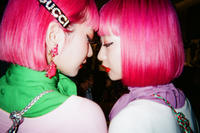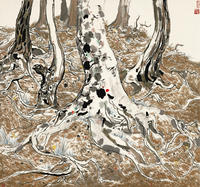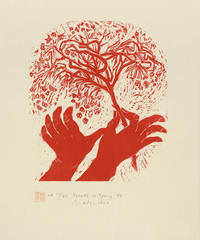NEW EXHIBITION SCHEDULE – PRESS RELEASE
Updated May 2021
MAJOR EXHIBITIONS
The John Sainsbury Exhibition Galleries

Pre-Raphaelites: Drawings and Watercolours
18 May–20 June 2021 | £6.00–£13.50
With international loans prevented by safety and travel restrictions, the Ashmolean is hugely privileged to be able to draw on its superlative permanent collections. Few people have examined the large number of Pre-Raphaelite works on paper held in the Western Art Print Room. Even enthusiasts and scholars have rarely looked at more than a selection. This exhibition makes it possible to see a wide range of these fragile works together for the first time. They offer an intimate and rare glimpse into the world of the Pre-Raphaelite Brotherhood and the artists associated with the movement. The exhibition includes works of extraordinary beauty, from the portraits they made of each other, studies for paintings and commissions, to subjects taken from history, literature and landscape.
Dante Gabriel Rossetti (1828–1882), The Day Dream, 1872–8

Tokyo: Art and Photography
29 July 2021–3 January 2022 | ££ to be announced
Tokyo: Art & Photography is a celebration of one of the world’s most creative, dynamic and fascinating cities. Including works on loan from Japan and new commissions by contemporary artists, the show spans the exquisite arts of the Edo period (1603–1868) when the country was officially closed to the outside world; the iconic images of Hokusai and Hiroshige; to the photography of Moriyama Daido and Ninagawa Mika. The exhibition looks at a city which has undergone constant destruction and renewal, telling the stories of the people who have made Tokyo so famous with their insatiable appetite for the new and innovative - from the samurai to avant-garde artists today.
Ninagawa Mika (b. 1972), Tokyo from Utsurundesu series, since 2018. Models: AMIAYA. © Ninagawa Mika, courtesy the artist and Tomio Koyama Gallery
FREE EXHIBITIONS

Owning the Past: from Mesopotamia to Iraq
17 May–22 August 2021 | Gallery 8, Lower-Ground Floor
Owning the Past is inspired by the devastating events in Iraq and the Middle East from 2014–17 when ISIS/Daesh attempted to eradicate the region’s borders, destroying heritage and the lives of many of its peoples. Curated by people from Oxford’s Syrian, Kurdish and Iraqi communities, with Ashmolean staff, this is the Museum’s first exhibition produced in two languages - Arabic and English. It explores both ongoing issues and the region’s twentieth-century history when, under British colonial administration, thousands of antiquities were excavated and sent to museums in the west. Playing a key role were Oxford archaeologists and Ashmolean employees, including T.E. Lawrence and Gertrude Bell who had special interests in Iraq’s history and were instrumental in establishing the new Kingdom of Iraq.
The exhibition also features a new commission from artist Piers Secunda which examines the deliberate destruction of culture like that perpetrated by ISIS in Mosul Museum in 2015. Together with ancient treasures from the Ashmolean’s collections, local people from diaspora communities look at the impact of recent events and how material culture affects their sense of identity and connection with their heritage and homelands.
Sumerian statue, c. 2400 BC, held by Nuha Abdo, Ashmolean Community Ambassador

Hans Coper 100
17 May–26 September 2021 | Galleries 18 & 34, Ground & First Floor
Internationally renowned ceramic artist, Hans Coper (1920–81), was an influential figure of the artistic diaspora in the UK. Born in Germany, Coper fled to London in 1939. He redefined the concept of studio pottery over a relatively short period of about thirty years. Using clay as his medium, he distinguished himself from the previous generation by fusing wheel-based pots together to great sculptural effect. With a limited palette of burnished black or creamy white, often with scored lines or etched surfaces, each pot has its own presence. Hans Coper’s pots draw on ancient traditions of sculpture and vessel making, while presenting an original artistic language characterised by a timeless aesthetic of simplicity.
Hans Coper (1920–1981), Pot, c. 1975, high grog clay, moulded. © Artist’s estate.

Wu Guanzhong
17 May–30 August 2021 | Gallery 11, Ground Floor
Wu Guanzhong (1919–2010) is one of the twentieth century’s most admired Chinese painters. Throughout his career, from his student days to his final years, he engaged with European painting alongside Chinese traditional paintings. This exhibition comprises works lent by Hong Kong Museum of Art, selected from a recent donation of 450 paintings and sketches from the artist’s family, and represents every decade of Wu Guanzhong’s career from the 1950s onwards in oils, ink, pencil and other media.
Wu Guanzhong (1919–2020), Tree roots, 1980s. Ink and colour on paper. Collection of Hong Kong Museum of Art © Artist’s Estate

Dante and the Invention of Celebrity
17 September 2021–9 January 2022 | Gallery 8, Lower-Ground Floor
Personality cults; style icons; reality TV: these staples of our modern world have an origin. They can all be traced to the Divine Comedy, in which Dante (1265–1321) exposed the hollowness and hypocrisy of worldly reputation and power, and where for the first time the lives of ordinary people were dramatised on a world stage, with full exposure of their failings. And by writing a best-seller Dante himself acquired the status of an icon. For the very first time, an individual of no particular status became an international poster-boy for justice, liberty, and love. On the 700th anniversary of Dante’s death, this exhibition explores Dante’s influence on art and culture from his own time right up to the present. It includes works by Botticelli, William Blake, Salvador Dali and Tom Phillips RA; and new work by the world’s first AI artist, Ai-Da. It coincides with a display at the Bodleian Library of precious early editions of Dante’s most famous work.
Tom Phillips RA (b. 1937), Dante in his Study, frontispiece, silkscreen print, 1982. © Tom Phillips

In Praise of Hands: Woodcuts by Naoko Matsubara
25 September 2021–15 March 2022 | Gallery 29, First Floor
This exhibition explores the work of distinguished print maker Naoko Matsubara (b. 1937) who donated 100 works to the Ashmolean in 2019. The human hand, one of the most challenging subjects for any artist, is a theme that Naoko has explored since the birth of son in 1973. She writes: ‘His tiny hands, at first clenching tightly, started to open up, and it startled me to see the very beginnings of human communication fluently expressed in so much variety.’ There is equal variety in Naoko’s treatment of this single subject as her work ranges over colour and monochrome, figurative to abstract, intimate to monumental.
Naoko Matsubara (b. 1937), Breath of Spring, 1994, woodcut. © Naoko Matsubara
ENDS
FURTHER INFORMATION
Claire Parris, Press Officer
claire.parris@ashmus.ox.ac.uk
T+44 (0)1865 278 178
M+44 (0)7833 384 512
@AshmoleanPress
Sarah Holland, Press Assistant
sarah.holland@ashmus.ox.ac.uk
T+44 (0)1865 278 285
M+44 (0)7714 435 868
PRESS IMAGES
Images for editorial use are available to download at: https://bit.ly/ashmolean2021




